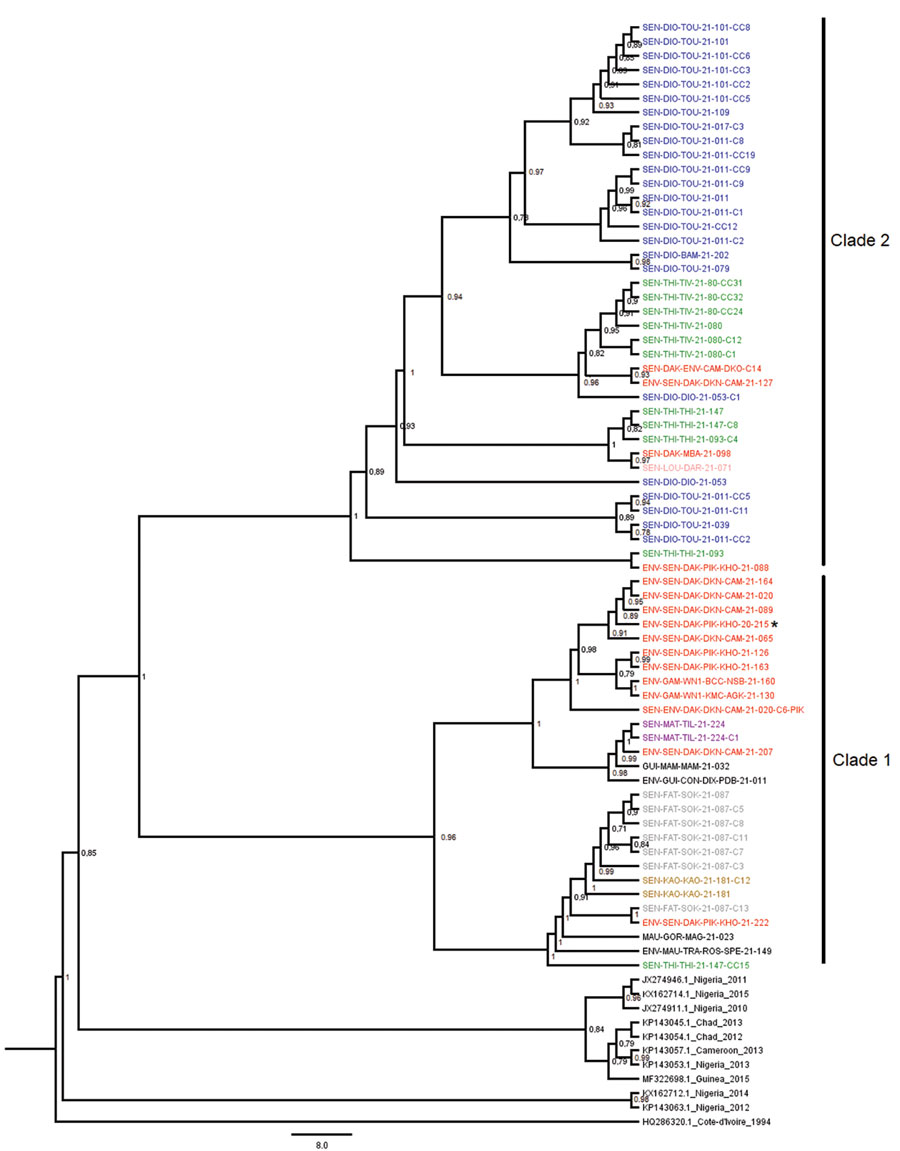Volume 28, Number 10—October 2022
Research
Importation and Circulation of Vaccine-Derived Poliovirus Serotype 2, Senegal, 2020–2021
Figure 2

Figure 2. Maximum-likelihood tree based on complete viral protein 1 sequences of cVDPV2 isolates circulating in Senegal during 2020–2021. The tree is midpoint-rooted; nodes are labeled with local support values computed using the Shimodaira-Hasegawa test for 5,000 bootstrap replications. Strain identifiers are designated as follows: SEN-XXX-XXX-21-xxx indicates an isolate from an acute flaccid paralysis (AFP) cases; SEN-XXX-XXX-21-xxx-Cx, close contact of an AFP case; SEN-XXX-XXX-21-xxx-CCxx, community contact of an AFP case; ENV-XXX-XXX-XXX-XXX-21-xxx, isolate from a sewage sample; SEN-ENV-XXX-XXX-XXX-21-Cx-XXX, community contact around a positive environmental site. Isolate names are color-coded as follows: dark blue, new characterized isolates from the Diourbel region (SEN-DIO); green, the Thiès region (SEN-THI); red, the Dakar region (SEN-DAK); pink, the Louga region (SEN-LOU); purple, the Matam region (SEN-MAT); gray, the Fatick region (SEN-FAK); brown, the Kaolack region (SEN-KAO); black, Guinea (GUI), Mauritania (MAU), and The Gambia (GAM), and previous sequences of cVDPV2 from West Africa countries. Asterisk * indicates the first sequence isolated from sewage in Senegal in December 2020. cVDPV2, circulating vaccine-derived poliovirus serotype 2.